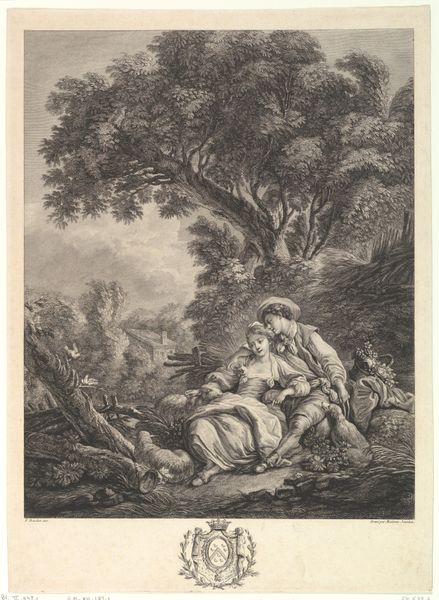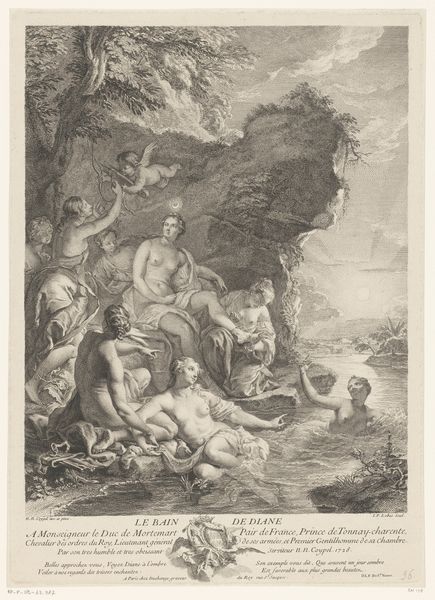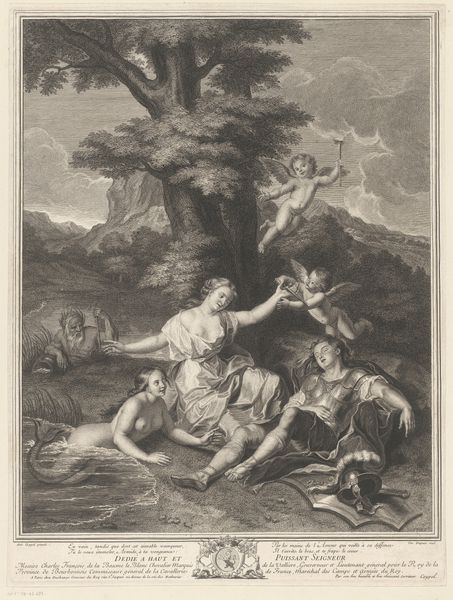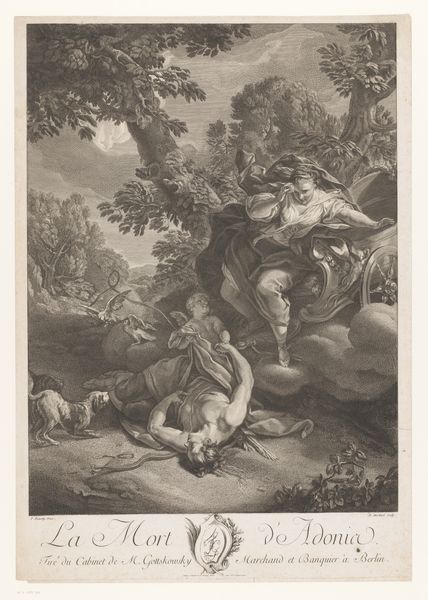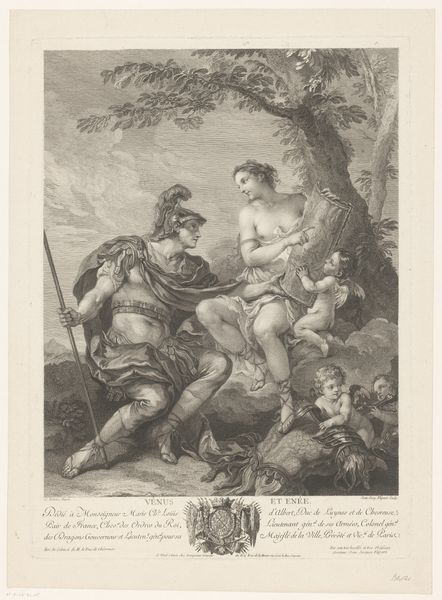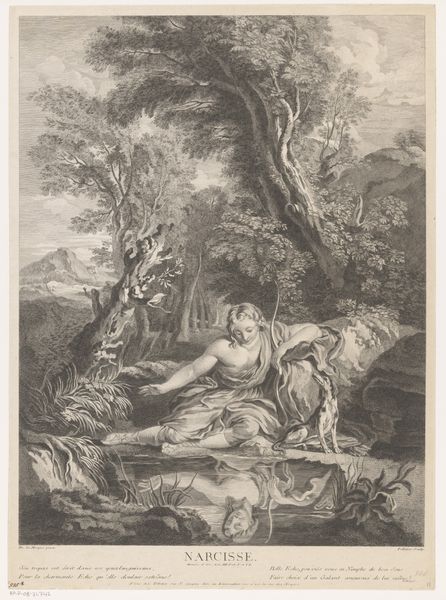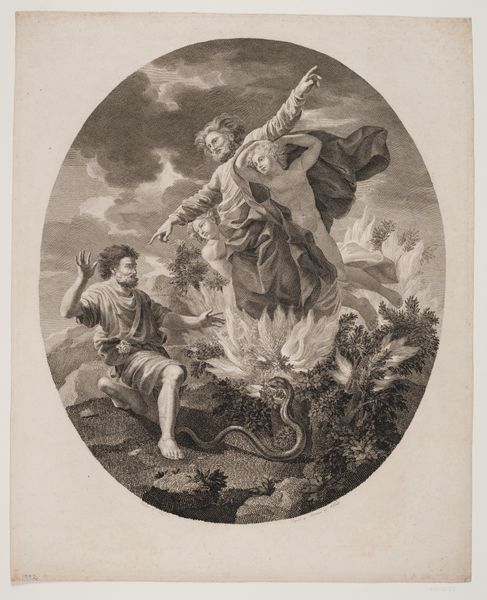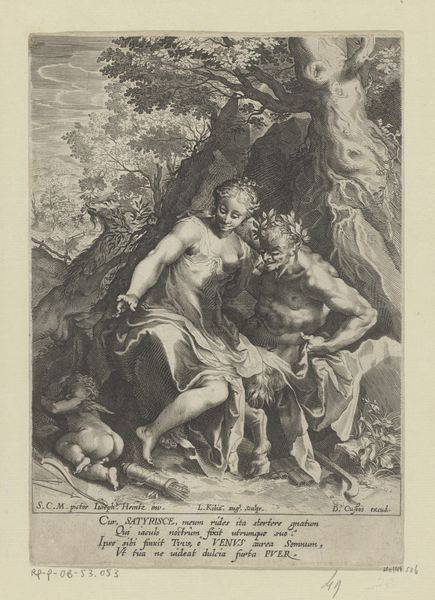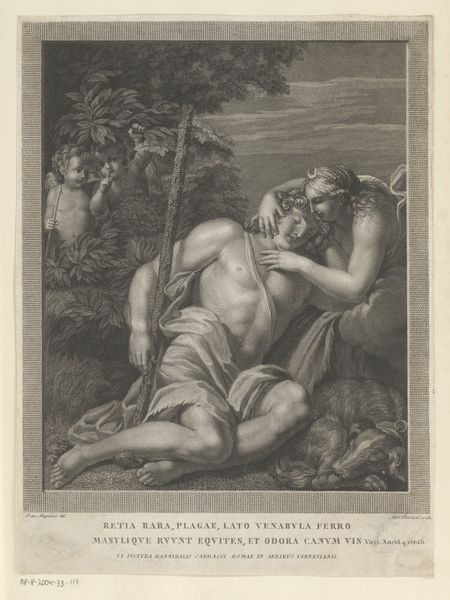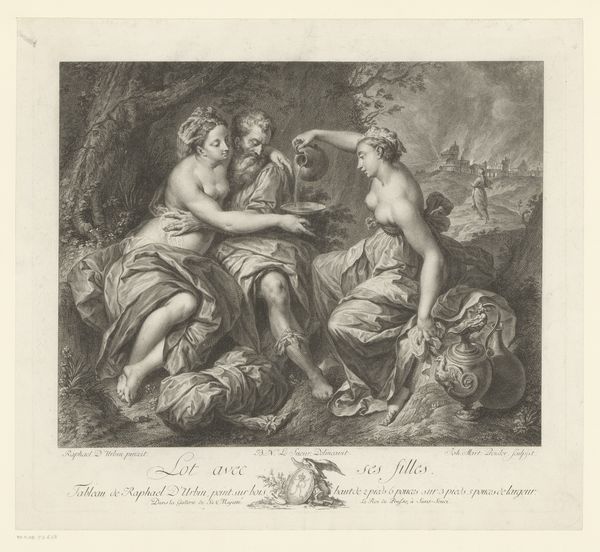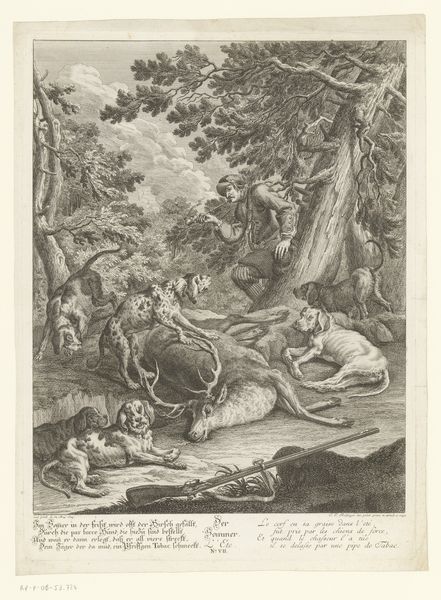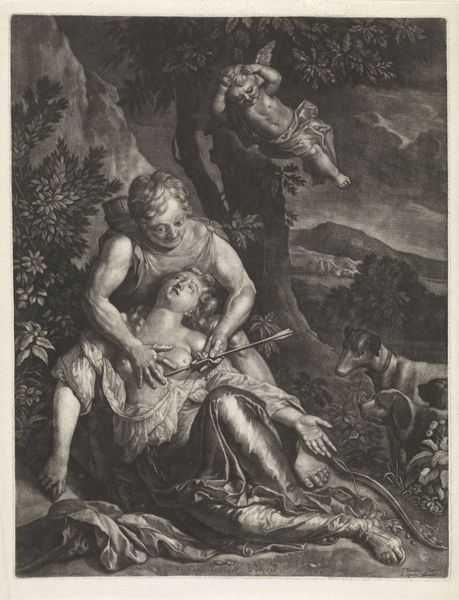
Dimensions: Sheet: 21 15/16 x 15 3/4 in. (55.8 x 40 cm) Plate: 19 7/8 x 14 7/8 in. (50.5 x 37.8 cm)
Copyright: Public Domain
Editor: So this engraving, "Venus et les Amours," from the late 18th century by René Gaillard, feels very… light. All those delicate lines! What I find most striking is the juxtaposition of Venus, a classical figure, set within a very Rococo, almost whimsical scene. How do you interpret this work? Curator: Precisely! Consider how Venus, often a symbol of ideal beauty and love, is presented. The Loves, or cupids, surround her. In a Rococo context, we might explore what these symbols tell us about the era's perception of love and beauty. It is much more playful than a renaissance or baroque version. Notice also the setting - it isn't an idealized garden as you might expect but a naturalistic (though hardly realistic) outdoor space. Editor: Yes, those plump little cherubs definitely add to the playfulness! Do their gestures carry meaning, like are they standard motifs? Curator: Absolutely. Even the cherubs’ actions -- gathering flowers or playfully tugging at Venus’ drapery – convey themes of fertility, sensuality, and innocent mischief. This is all part of a visual vocabulary which spoke very clearly to eighteenth-century viewers. Moreover, consider the birds accompanying Venus. Can we read them as a token for nature or also Aphrodite since the dove is often sacred to her? Editor: I see your point! This seemingly frivolous scene really has layers of symbolic language at play, blending classical ideals with the trends of its time. Curator: Exactly! Recognizing how such symbols function is critical in reading imagery of the period, particularly as they relate to our own shifting cultural memory and psychology around beauty and love. Editor: I’ll never look at a cherub the same way again! Thanks for illuminating all that.
Comments
No comments
Be the first to comment and join the conversation on the ultimate creative platform.
